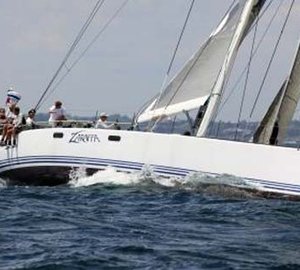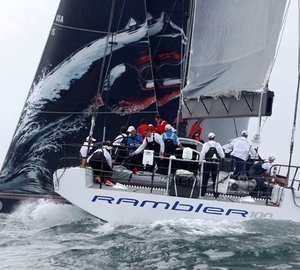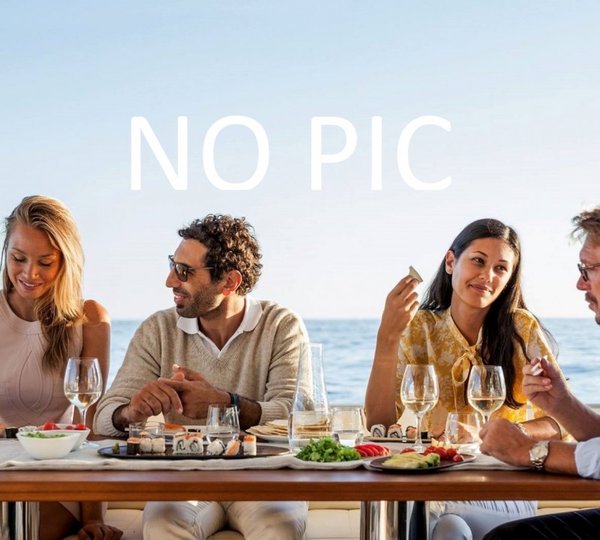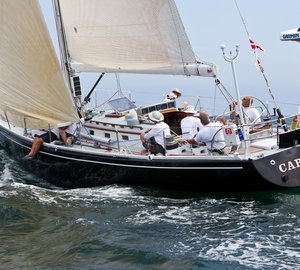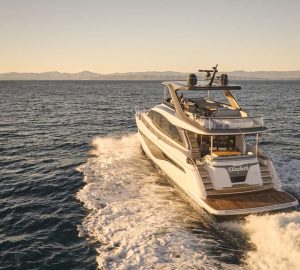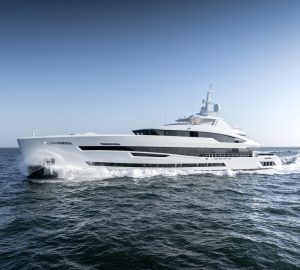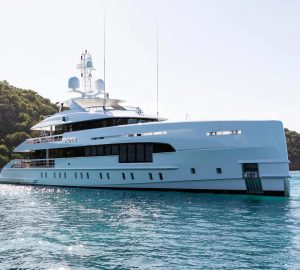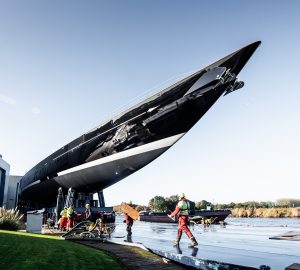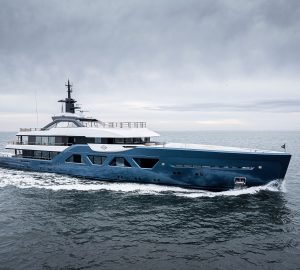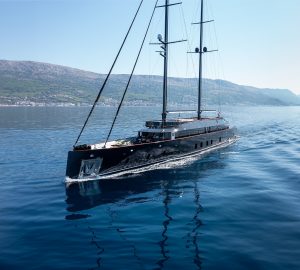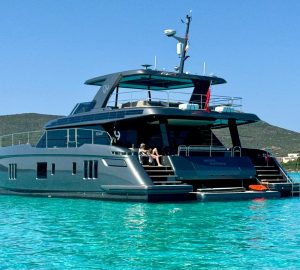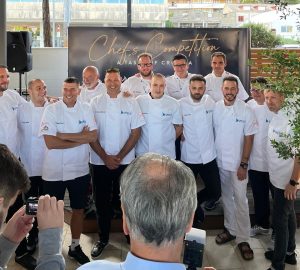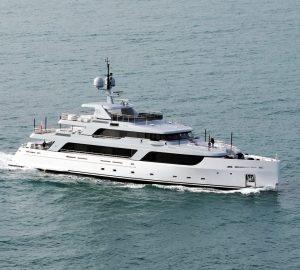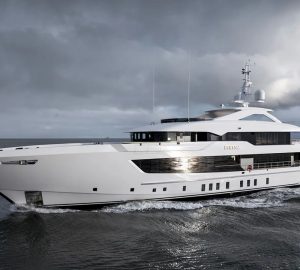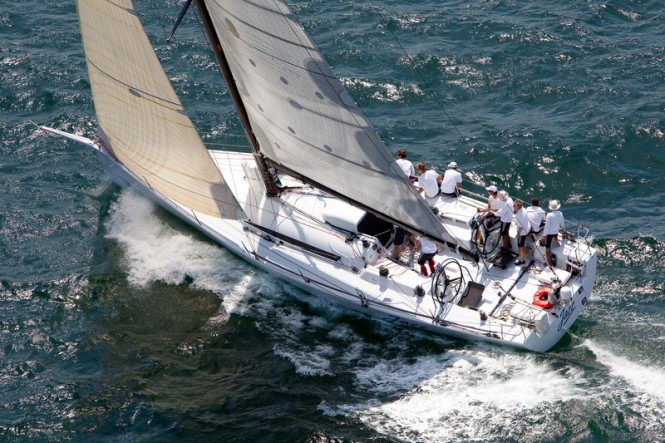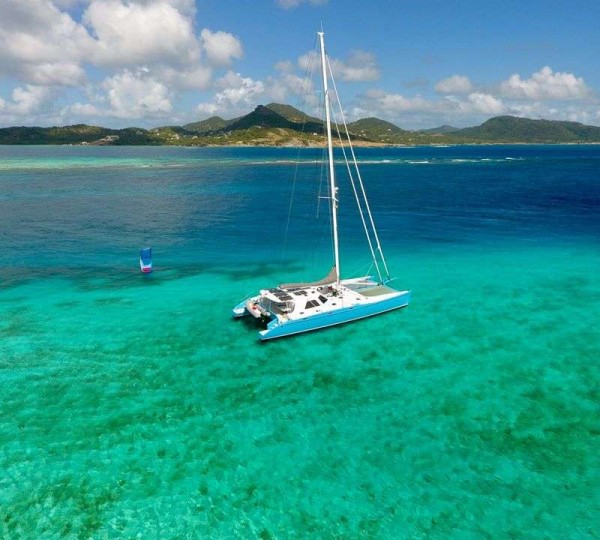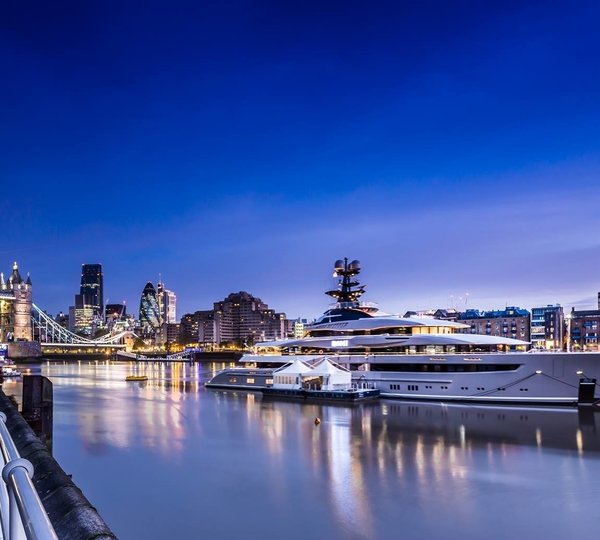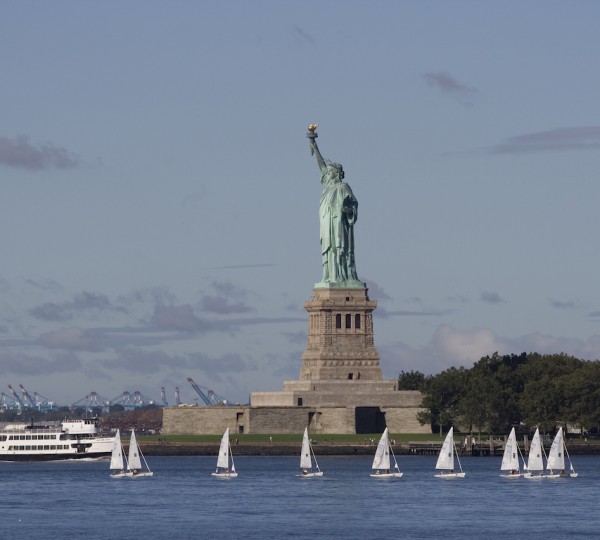The Maxi Yachts that started on July 3 from Newport, R.I. to The Lizard in southeast England have been making fantastic progress in the Transatlantic Race 2011. Little in the way of tactics have come into play thus far, as all six yachts in IRC Class One have been taking the direct route, coaxing every knot of speed out of their powerful machines.
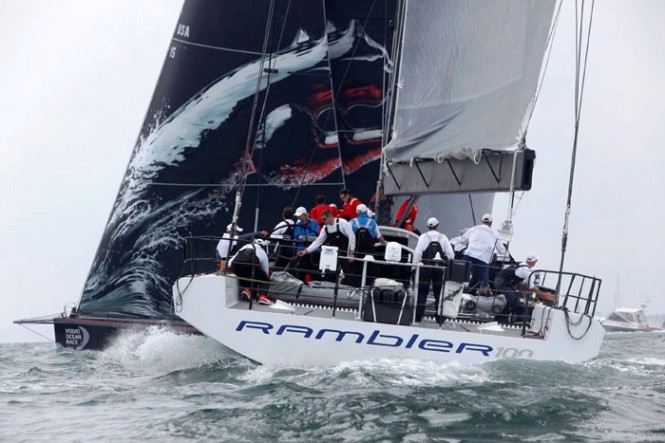
Sailing yacht Rambler and Mar Mostro at the start of the Transatlantic Race 2011 - Photo by Dan Nerney.
Rambler 100 has been averaging close to 20 knots and with just under 2000 miles to go is predicted to finish on the 10th of July. The Juan Kouyoumdjian-designed 100’ canting keel maxi is on course to set an exceptional benchmark for a transatlantic.
“Great sailing, so far, aboard Rambler 100,” said navigator Peter Isler (San Diego, Calif.), confirming by satellite link that Rambler 100 is fully in the groove. “By our calculations we did a 464-mile 24-hour run from the start. That’s a 19.3 knot average! Great sailing for sure. We’ve had basically the same sail combination up since turning the corner at Nantucket Shoals.”
On the water Rambler 100’s nearest competitor is PUMA Mar Mostro, skippered by Ken Read (Newport, R.I.). PUMA has taken up a slightly more northerly position and is in good breeze, however, the Point Alpha ice gate is looming and the Volvo 70 may need to alter course towards the east to leave the mark of the course to port. Nearly one hundred miles behind Rambler 100, sailing yacht ICAP Leopard, skippered by Clarke Murphy (New York, N.Y.), is south of the rhumb line and enjoying better breeze than the two rivals in front. Even at this early stage in the race, it looks as though Rambler 100 will take the spoils — as long as they do not suffer any major gear failure.
The Oakcliff All American Offshore Team, racing aboard the Reichel Pugh-designed Vanquish, is under no illusions about the quality of the opposition, but the experience is a massive education for the young team, as they explained in their blog:
“We obviously have our work cut out for us, but morale is great and everyone’s just happy to be out here. Winds and waves are forecasted to build over the next 24 hours as the low we left Newport in slides further to the North and compresses with the Atlantic High to the Southwest. Twenty-five knots on the quarter should make things a little more interesting!”
Meanwhile in IRC Class Two, front-runner Jazz, skippered by Nigel King (Lymington, U.K.), is trying to hit a moving target. The Cookson 50 has altered course north, aiming for a low-pressure system, and, if Jazz can connect with it, this will result in high wind speeds from a very favorable direction. This move north also avoids an area of little wind to the south of Jazz. The German Rogers 46s, Shakti and Varuna, have been unable to take this northerly route as they have remained south to pass the ice gate, and it will be interesting to see if they follow Jazz.
In IRC Class Three, Zaraffa, skippered by Huntington Sheldon (Shelburne, Vt.) is still the class leader. Ambersail’s move south saw the Lithuanian crew make up good ground, however, the advance was short lived. Ahead of Ambersail lies an area of little wind and they should make the move north, effectively sideways, to get into pressure.
In IRC Class Four, Carina, skippered by Rives Potts, Jr. (Essex, Conn.), has been the star of the show. In the last 24 hours, however, their competition has most definitely caught up some miles. Carina chose a southerly route, while the Army Sailing Association’s British Soldier, among others, stayed to the north. British Soldier has advanced 30 miles on Carina, but the American team is still over 170 miles ahead.
Ned Collier-Wakefield’s (Oxford, U.K.) Concise 2 is currently 60 miles ahead of Dragon, skippered by Mike Hennessy (Mystic, Conn.). The two Class 40s have been enjoying some fast-reaching conditions and are now fully offshore many miles from land.
“Dragon passed the longitude of Point Alpha and now the next mark of the course is Lizard Point, a mere 1800 miles down the road,” reported Hennessy in a message revealing his thoughts as they head out into the Atlantic. “Funny enough, our entire race thus far has been within about 100 miles of land. Now we are heading off into that big open space in between, the wild blue yonder. See you on the other side.”
There are some highly amusing blogs and uplifting commentary coming from the racecourse. Crossing the Atlantic on sail power is a life-changing experience and the race blogs bring those feelings to life for a worldwide audience.
“Life onboard is going well and the boat is looking tidy and shipshape which makes all the difference,” said Christian Ripard (Valetta, Malta), explaining by satellite link what life is like for the crew on Jazz. “Our food is good, considering it’s freeze-dried, but already, after six days, I look forward to eating some fresh salad or something with a bit more crunch to it. WOW! Just got a call on deck, we just missed a huge whale by 50 feet. Last night was pretty crazy too….bombing down waves at 20 knots in thick fog with NO visibility is pushing one’s fate. My wife Jackie is probably right in thinking that anyone in his right mind doing this is fit for the loony bin. Sometimes I think she’s right…..but, actually experiencing this sort of stuff is somewhat overwhelming and beautiful.
Hearing the snoring of the off-watch crew is also something which I come out here time after time to find comforting….knowing that you can go to sleep and truly trust that the guys on deck will keep you safe…. that’s something we sailors have…. a bond very difficult to find when one is on dry land….. So back to my call of duty on deck, Mike Broughton wants to get back on his nav table to check our progress and work on our next move… bring it on!”

